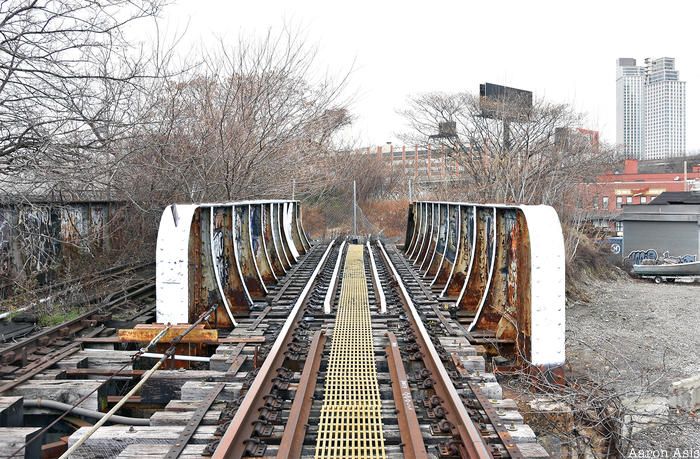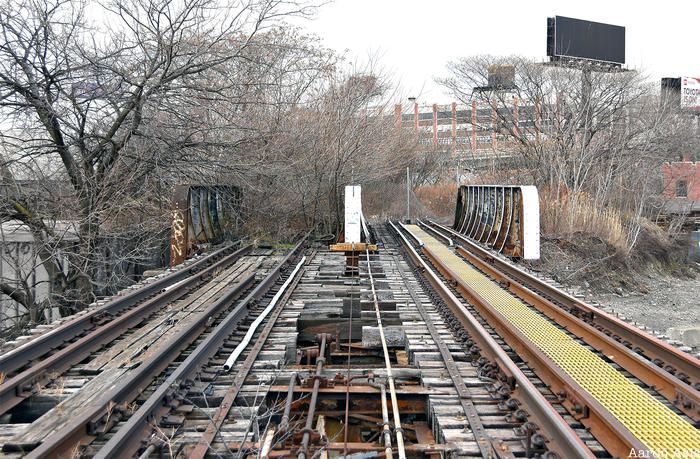How to See the Liberty Bell...in Queens
A copy of the famous American bell can be found inside a bank, which itself is modeled after Independence Hall!


A recent guerrilla art installation in Queens is subtle, but raises important questions about the on-going cycle of building, abandonment, and redevelopment in the surrounding neighborhood and New York City as a whole. The piece by artist Aaron Asis, entitled Railroad Eraser, consists of painted white highlights along a decommissioned railroad corridor (hint: we have covered this location before on Untapped New York!). This temporary installation reminds us all of a familiar landscape but encourages us to appreciate the unique urban character hidden within our decommissioned landscapes, as places to encourage accidental discovery and share nuanced glimpses into our history — and as an alternative to large-scale erasure and redevelopment.

The title of the piece literally and figuratively challenges the ongoing erasure of the city’s developmental past and is intended to encourage an unrestricted interaction with art (and our city) that is not rooted in superficial nostalgia. The white color, also painted on the tracks themselves, is deliberate to provide clean contrast to the aesthetic of decommissioned infrastructure. But if one passes by the work serendipitously, it may not immediately alert them to the intervention. But seen in contrast to the paired track next to it, some questions might be raised.

Asis tells us that he is deliberately keeping the location unnamed, but it is on a section of rail that was commissioned earlier this decade (there is active rail line adjacent to this specific bridge, but the artwork is along the decommissioned stretch). Curious folks can certainly determine its location by these photographs. Workers who were there during Asis’ installation looked at him curiously but allowed him to continue. He tells us, “There is spirit which is being lost in our city and Railroad Eraser challenges any aspirations for the future that require us to circumvent the past or present…and questions any motivations to normalize our experiences in a city that prides itself on the opposite”
Next, check out other site-specific works by Aaron Asis in New York City.
Subscribe to our newsletter